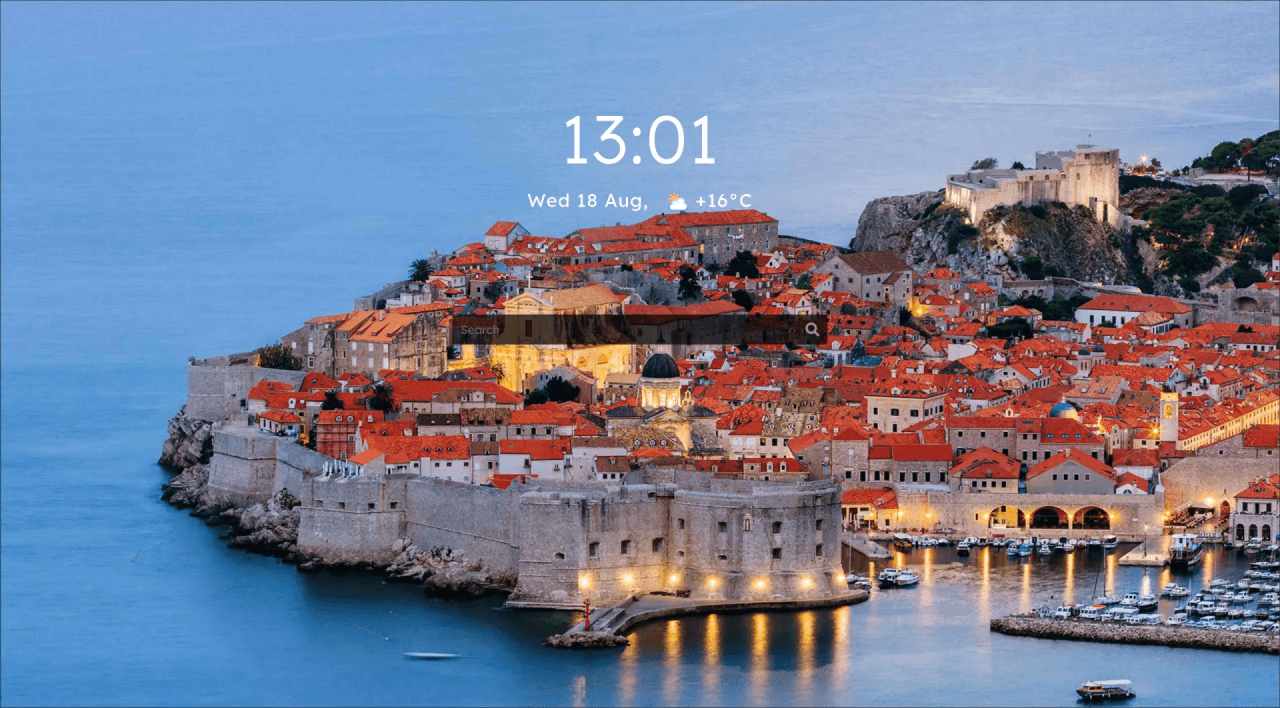Whilst Microsoft’s Bing might not be many people’s first choice of search engine. It has always had one thing going for it: daily homepage wallpapers.
But what about if you don’t want to use Bing just for their wallpaper’s? Because if we’re honest with ourselves, that’s an odd reason to stick with a search engine. Let alone decide to make it your browser’s homepage.
Or maybe, like me, you’re just too lazy and unimaginative to curate your own wallpaper collection. Don’t want to keep storage of all those photos. And like the small spice in life that comes from not knowing what’s today’s wallpaper?

Either way, keep reading on as I’ll be going through a small script that will find and download the latest Bing daily wallpaper. Then you can do whatever you’d like with it. And hopefully, you’ll learn a bit more about some of the cool things you can achieve from shell scripting!
The script
#!/bin/sh
bing="http://www.bing.com"
xmlURL="http://www.bing.com/HPImageArchive.aspx?format=xml&idx=0&n=1&mkt=en-WW"
saveDir=$XDG_CACHE_HOME'/bing-wp/'
mkdir -p $saveDir
picName="bing.jpg"
picURL=$bing$(echo $(curl -s $xmlURL) | grep -oP "<url>(.*)</url>" | cut -d | ">" -f 2 | cut -d "<" -f 1)
curl -s -o $saveDir$picName $picURL
exitBreaking it down
This shebang simply tell the parent shell which interpreter to use when running the script.
#!/bin/shHere we’re setting the variables to be used for creating the URL of the latest Bing wallpaper.
bing="http://www.bing.com"
xmlURL="http://www.bing.com/HPImageArchive.aspx?format=xml&idx=0&n=1&mkt=en-WW"Then we define the location where the image will be saved to, once downloaded. By using the mkdir utility, to create the folder at the location defined as $saveDir. The -p option flag here, is used to make sure all the necessary parent directories up the branch of bing-wp/ are also created. And finally, the variable picName is assigned to create the image file.
saveDir=$XDG_CACHE_HOME'/bing-wp/'
mkdir -p $saveDir
picName="bing.jpg"We can break down this nested and piped variable assignment into more understandable parts.
picURL=$bing$(echo $(curl -s $xmlURL) | grep -oP "<url>(.*)</url>" | cut -d ">" -f 2 | cut -d "<" -f 1)Like before, this is simply reassigning Bing’s base URL to a variable.
picURL=$bing
# picURL=http://www.bing.comThe curl command silently, -s - meaning without progress or error reporting - goes to the URL address assigned as xmlURL, and outputs it’s contents.
$(curl -s $xmlURL)
# <?xml version="1.0" encoding="utf-8" ?><images><image><startdate>20210817</startdate><fullstartdate>202108170000</fullstartdate><enddate>20210818</enddate><url>/th?id=OHR.PochuckValley_ROW7250263541_1920x1080.jpg&rf=LaDigue_1920x1080.jpg&pid=hp</url><urlBase>/th?id=OHR.PochuckValley_ROW7250263541</urlBase><copyright>Stairway to Heaven trail, Wawayanda State Park, New Jersey, USA (© Leembe/Getty Images)</copyright><copyrightlink>https://www.bing.com/search?q=wawayanda+state+park+new+jersey&form=hpcapt</copyrightlink><headline>Info</headline><drk>1</drk><top>1</top><bot>1</bot><hotspots></hotspots></image><tooltips><loadMessage><message>Loading...</message></loadMessage><previousImage><text>Previous image</text></previousImage><nextImage><text>Next image</text></nextImage><play><text>Play video</text></play><pause><text>Pause video</text></pause></tooltips></images>Within this long line of XML are the <url> and </url> tags. Containing the day’s Bing wallpaper URL parameters within. To separate this information from the curl commands output. We need to pipe that resulting string into grep.
grep -oP "<url>(.*)</url>"
# <url>/th?id=OHR.PochuckValley_ROW7250263541_1920x1080.jpg&rf=LaDigue_1920x1080.jpg&pid=hp</url>Now we just need to remove the <url> and </url> tags surrounding the resource name and parameters of the image address. This will be done by piping this text through the cut command, twice.
cut -d ">" -f 2
# /th?id=OHR.PochuckValley_ROW7250263541_1920x1080.jpg&rf=LaDigue_1920x1080.jpg&pid=hp</urlcut -d "<" -f 1
# /th?id=OHR.PochuckValley_ROW7250263541_1920x1080.jpg&rf=LaDigue_1920x1080.jpg&pid=hpThis snippet of the image URL is then concatenated with the $bing variable using echo.
picURL=$bing$(echo ...)
# picURL=http://www.bing.com/th?id=OHR.PochuckValley_ROW7250263541_1920x1080.jpg&rf=LaDigue_1920x1080.jpg&pid=hpFinally, putting this altogether, we can call curl to silently -s get the image with $picURL, now pointing towards the day’s image. And direct the output -o to the be saved as bing.jpg, inside the $XDG_CACHE_HOME/bing-wp/ directory.
curl -s -o $saveDir$picName $picURLRemembering to exit the script at the bottom of the file.
Options for Running the Script
I won’t get into how to do it here, but just as a pointer on how you can now take this script to run and get the latest Bing wallpaper. Here are a few options on how you might want to go about running the script everyday.
- .xinitrc
- systemd Timer
- CronJob